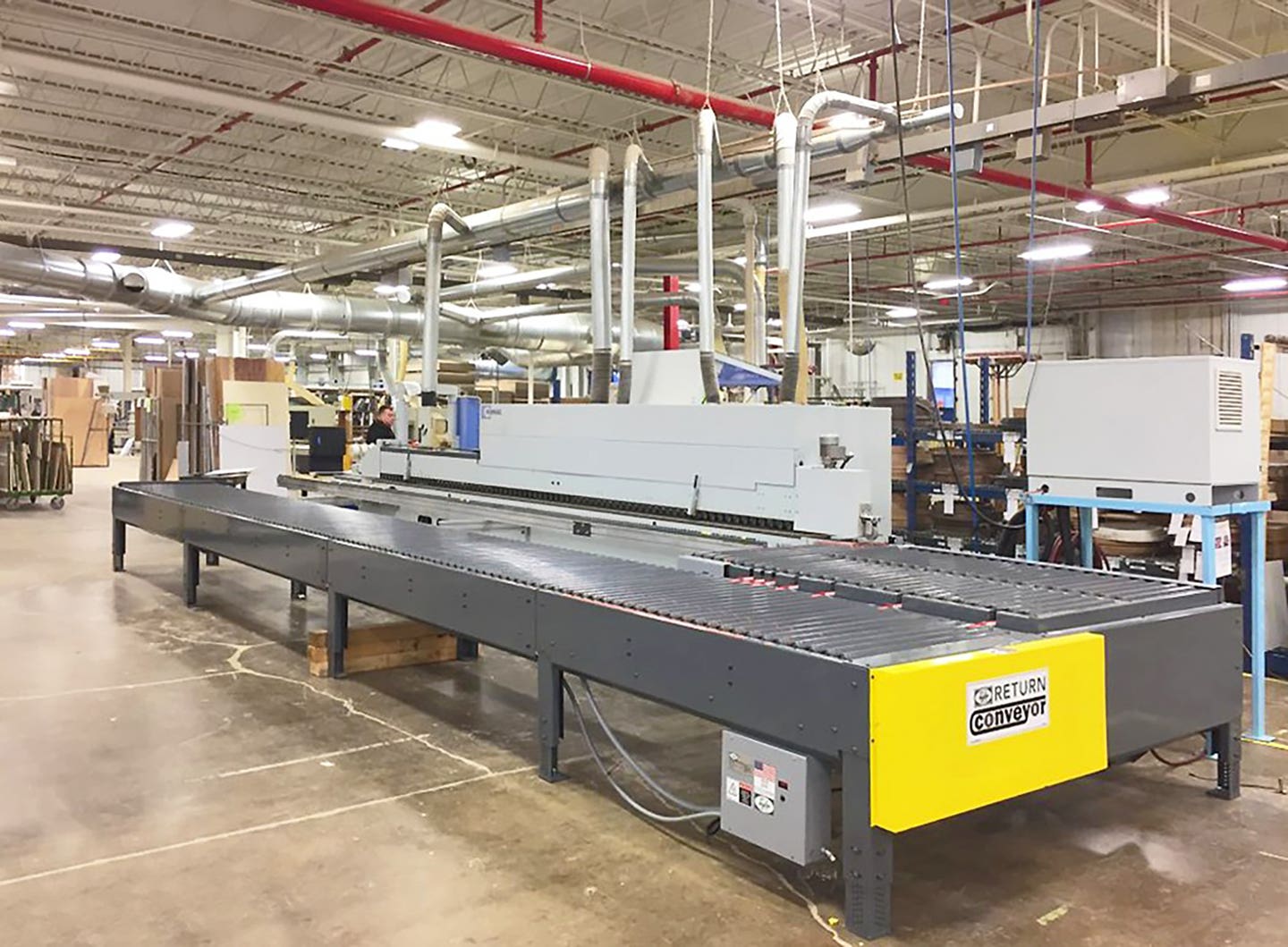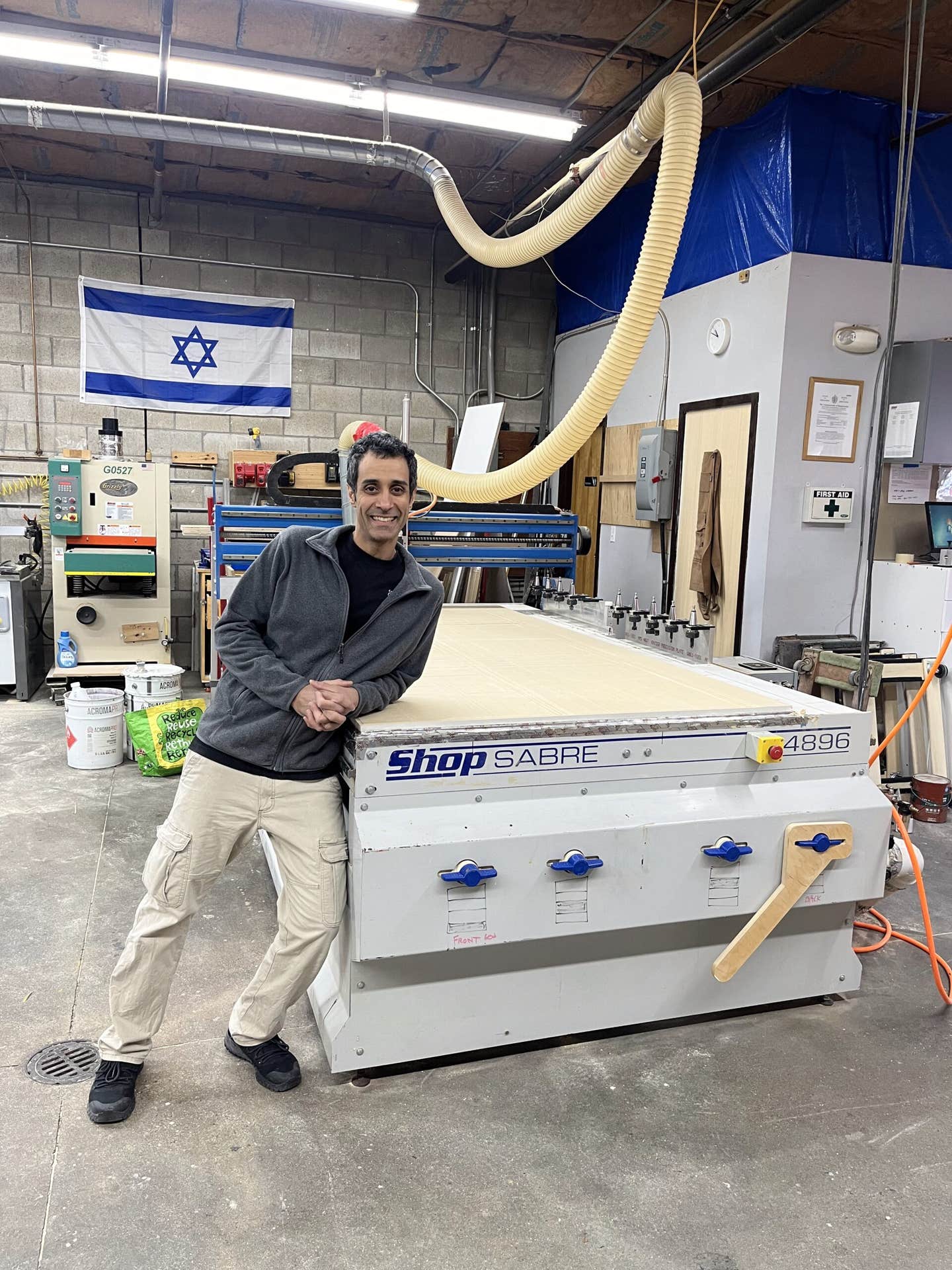Just the facts on vacs
Exploring the options and components of small-shop dust collectors
It’s easy to get mired in detail when thinking about dust collection. And while microns and static pressure have their place, they’re not the primary considerations. The type of machine, the power of the motor, and the style of ductwork are more relevant, so let’s start with a look at the different kinds of small-shop machines.
The four choices are a shop vacuum, single-stage collector, two-stage collector, and a cyclone. A good rule of thumb is that shop vacuums serve portable power tools and dust collectors handle debris from stationary machines.
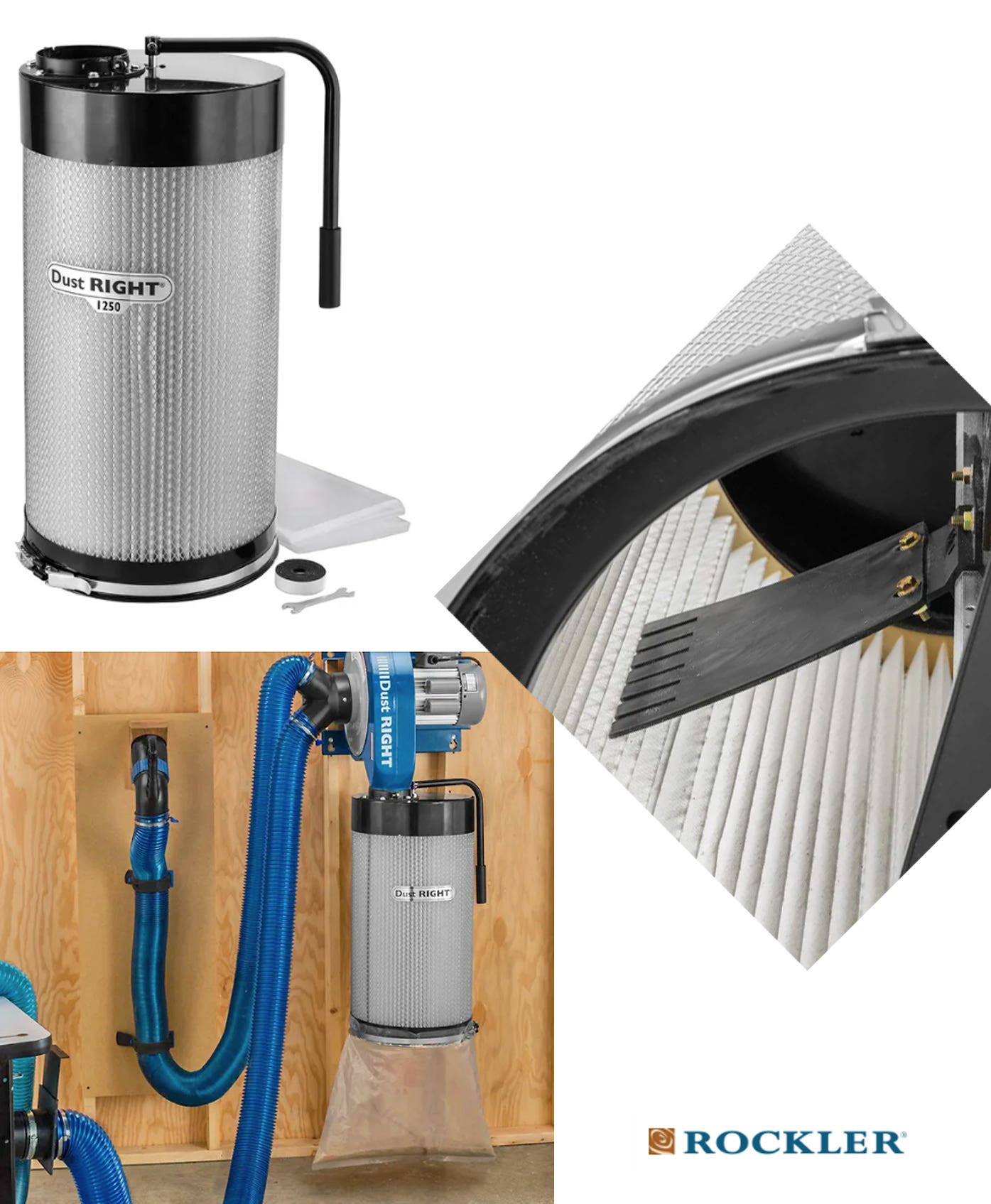
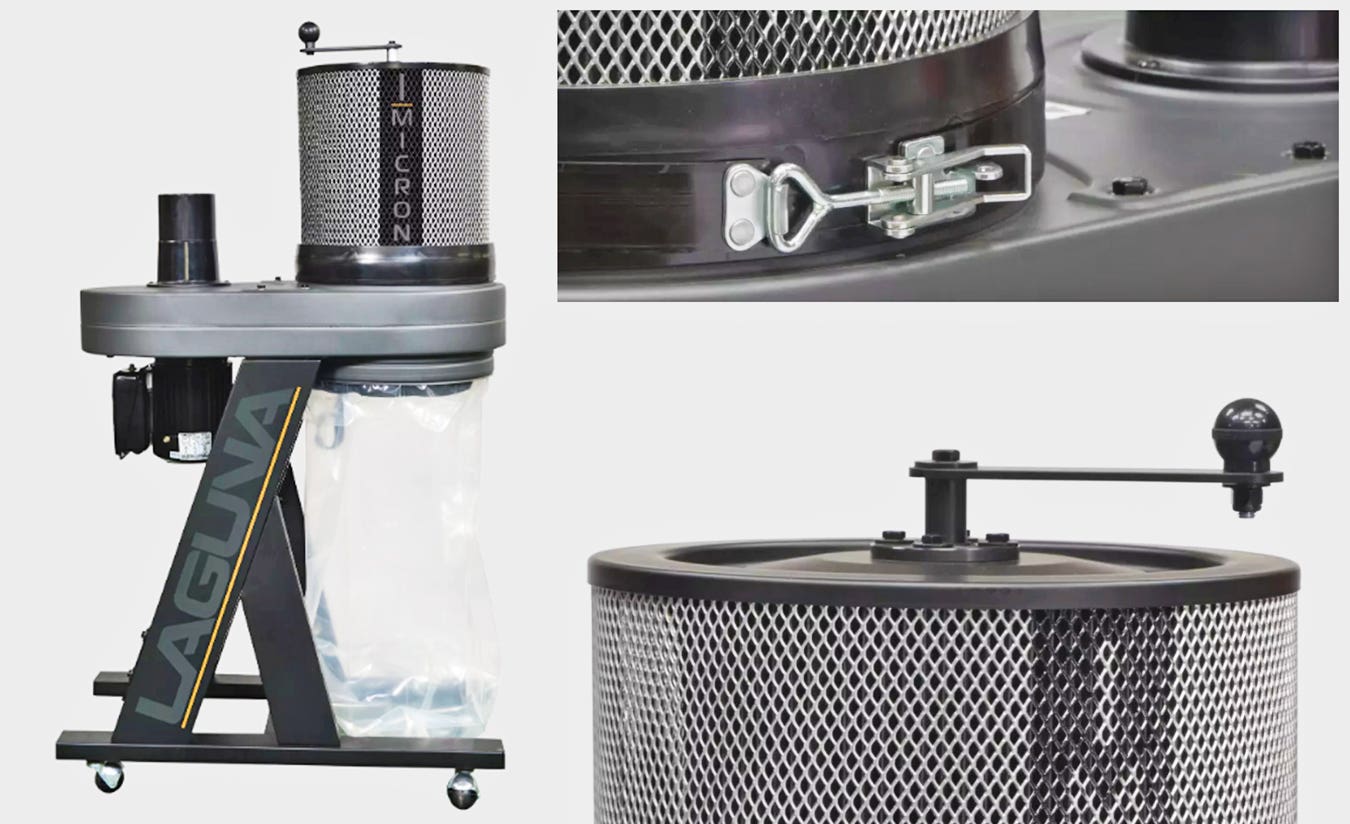
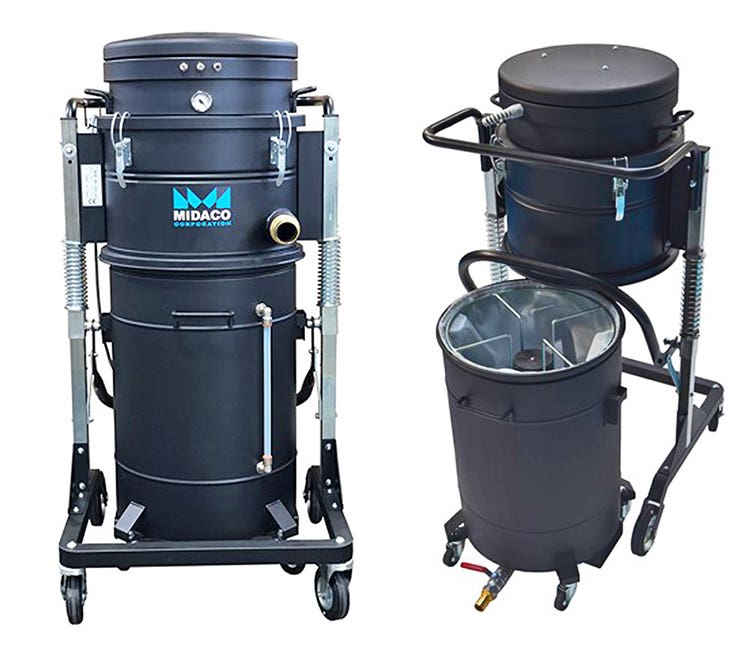
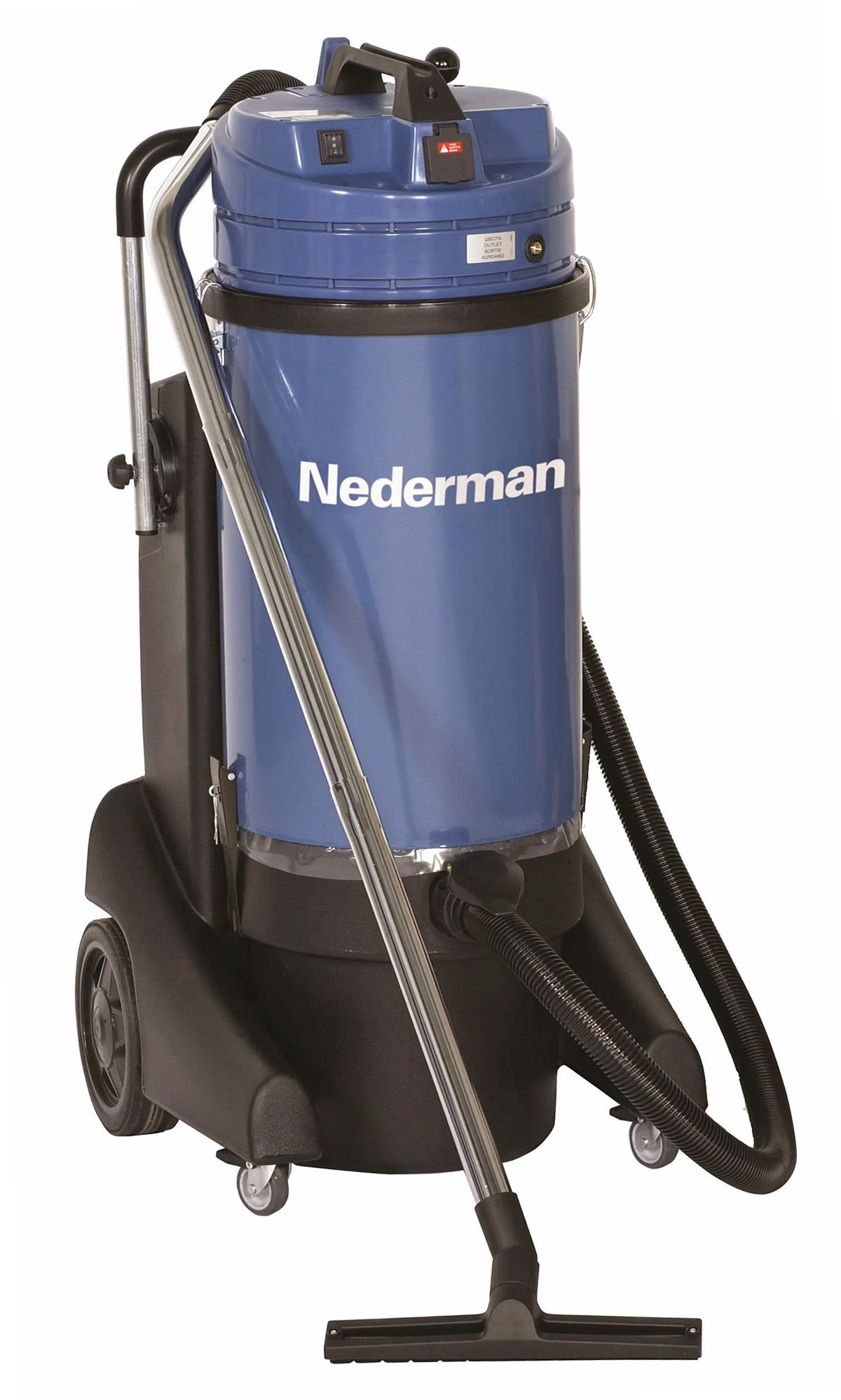

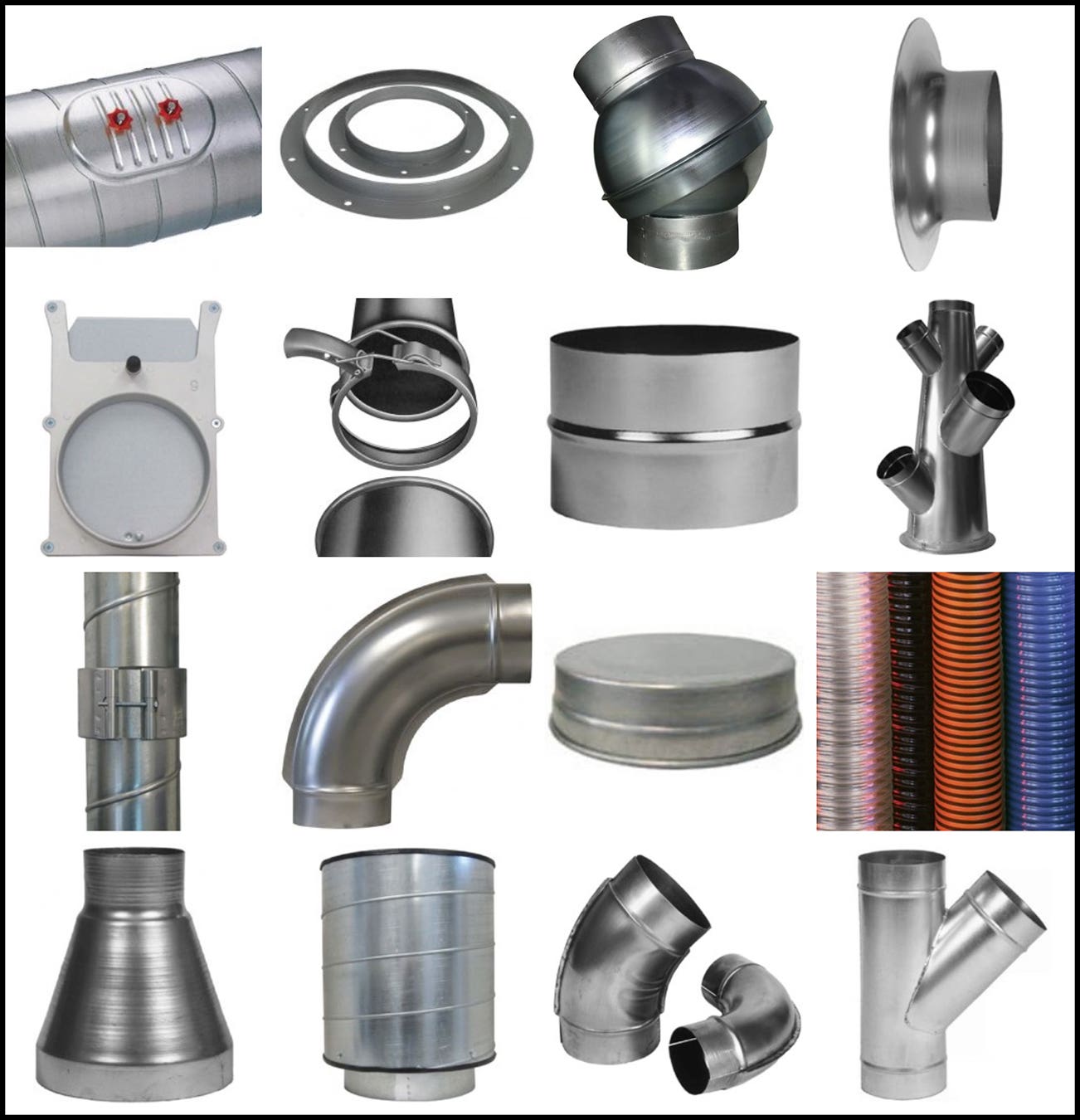

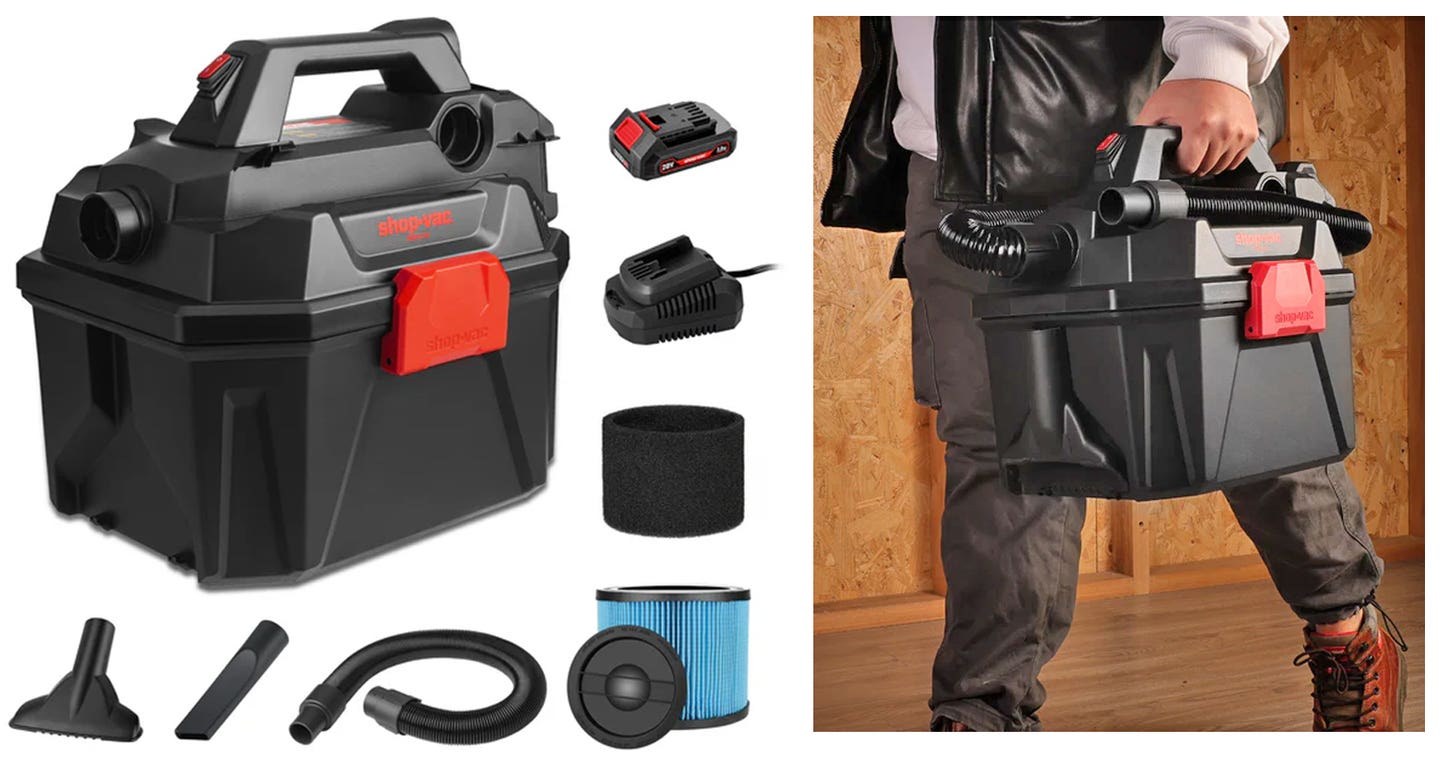
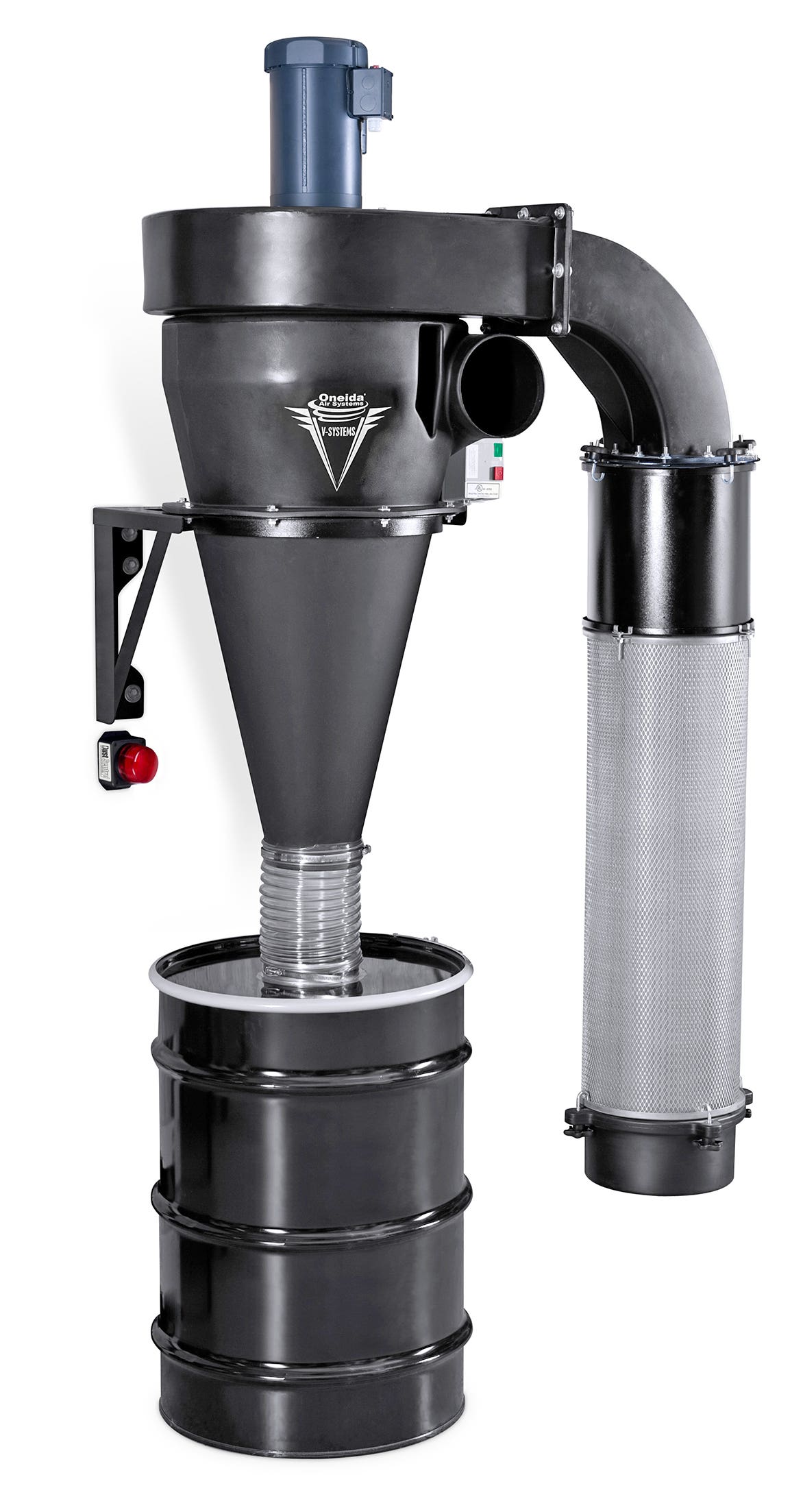
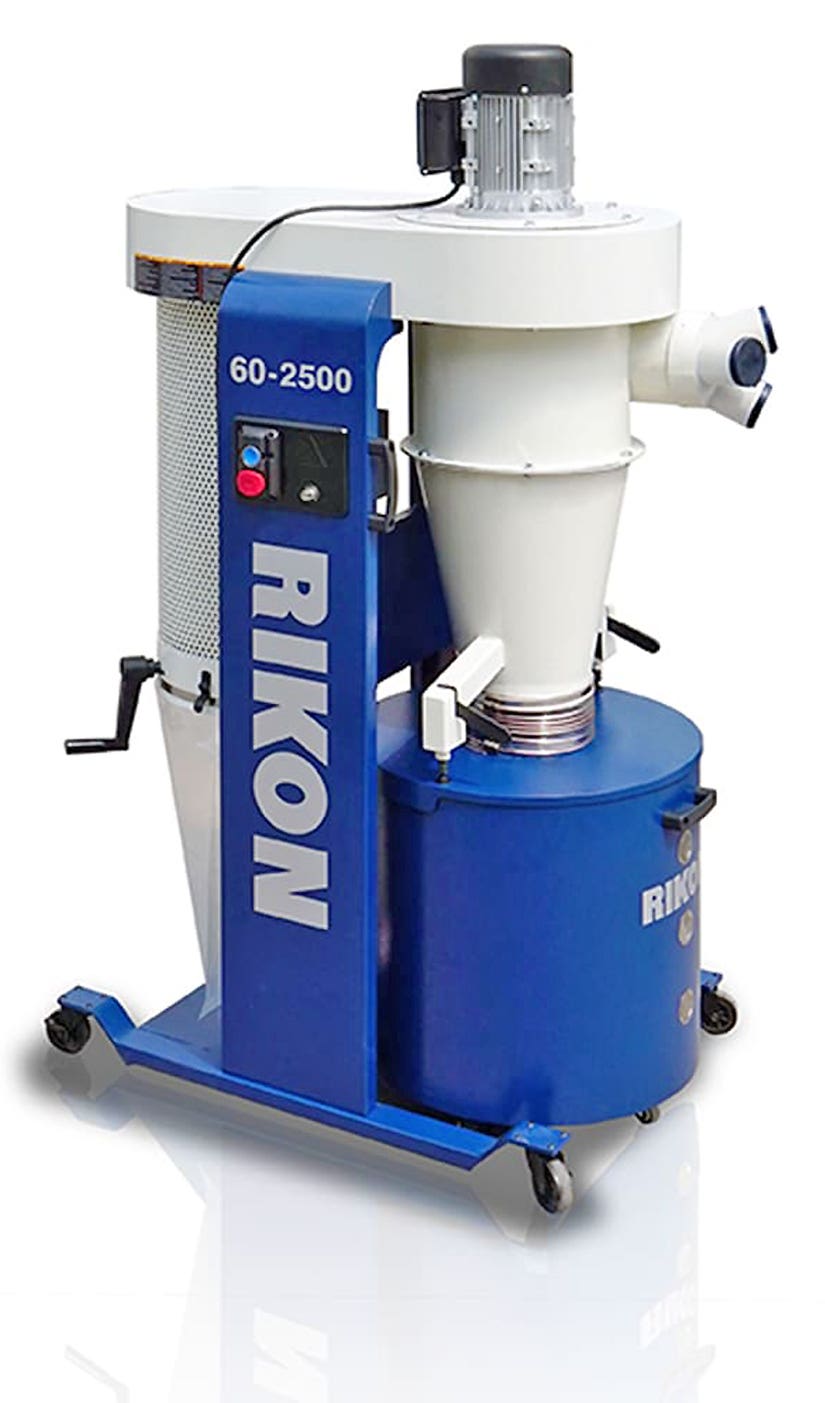

Shop vacuums can be quite loud and usually don’t have much of a filtering system for fines (although that’s changing), but they’re generally inexpensive and always portable. These are high-velocity, low-volume machines, so they need to have a very small diameter hose to keep dust and debris in suspension. If the speed of the air in a pipe slows down, the particles in the stream can drop. So, a shop vacuum sucks a small amount of air at high speed. That makes them ideal for jobsite work, especially when they can be connected directly to tools such as sanders and routers.
A single-stage collector sucks debris from a machine into a chamber where the fan is housed and then sends it down into a collection bag. After the larger particles and chips drop out, the remaining air is pushed through a filter bag and scrubbed of fines before being returned to the shop. Some single-stage collectors only have one bag that works for both waste and filtering. As it fills up, there is less and less filtering material available, so the efficiency can drop significantly. Some single-stage units have a plastic bag below and a fabric bag above, where the plastic catches waste and the fabric is the filter. Units with two fabric bags (one top, one bottom) may offer more filter area, but again the lower bag fills quickly so it probably doesn’t offer a lot of advantage over plastic. On the other hand, plastic ductwork and bags tend to store static electricity, which is never a great idea around fine dust. Some of the more powerful single-stage collectors can have two collection bags below and either two filter bags or two canisters up top.
The biggest advantage of moving up to a two-stage collector is that it will remove the larger debris before it reaches the impeller (fan). A two-stage basically diverts the airflow so that the chips never hit the fan. The simplest and least expensive two-stage is an aftermarket plastic hood that directs the airflow through a garbage bin before it gets to the collector. Some larger two-stage collectors offer drums that use plastic liners, which can make it easier to clean them out.
Moving up to a two-stage cyclone collector adds another wrinkle. The funnel-shaped cyclone spins the air around until it slows down enough for the larger particles to fall out of the suspension stream. Cyclones are widely accepted as the best option because no large parts ever reach the vanes on the impeller. But be aware that this style of collector can cause a significant drop in airspeed in the ductwork – up to a third, in some cases. So, you’ll need a bigger cyclone (in terms of CFM or horsepower) to get the same results as a standard two-stage. And where you place it makes a difference, too. Sanders make fine dust, while jointers and planers make chips. So, it’s a good idea to locate the dust collector closer to the chipmakers as large particles will have less distance to travel.
Deciding which type of collector to buy isn’t just about performance. Sometimes, it’s about space. These units can be quite large and cumbersome, and some of the cyclone collectors can be quite tall. Putting a collector on a platform above other machines or suspending it from the rafters are options for shops with high ceilings. Locating the collector in another room can reduce sound but locating it outdoors can be problematic. There may be issues with freezing, or zoning rules about noise. And venting outside doesn’t make much sense for woodshops that have to pay to heat or cool the air in the shop, if their dust collector continuously exhausts the treated air. These are all elements best considered before the collector is purchased.
Filter facts
Everyone has heard of HEPA, but many woodworkers don’t know exactly what it means. The acronym stands for High Efficiency Particulate Air, and the efficiency refers to this type of filter’s ability to capture up to 99.7 percent of all airborne particles that measure 0.3 microns or less. The symbol for a micron is μm, and a micron is 1/1000 of a meter in diameter. That’s about 1/25000". HEPA is important because fine dust presents the most potential for woodworkers developing nasal cancer or pulmonary problems such as chronic obstructive pulmonary disease (COPD) after years of exposure.
There’s a harsh reality here – filters can be too fine. If the weave is too tight, contaminated air can’t escape because the fines it carries will continuously clog the holes. So, there is a trade-off. As the weave tightens, the collector will require more filtering area (bigger bags).
A canister filter is preferable to a fabric filter, if for no other reason than it’s easier to clean the caking from the inside walls. Turning the handle on the top of a canister beats whacking a fabric bag with a broom handle. By the way, a broom handle will be more efficient when the collector is turned off. If the collector is running, the inflated bag doesn’t have much give, and the air pressure is still pushing through. Both of those factors make it harder for the cake to release and fall. Cartridges are efficient and effective for collecting fines, because their accordion design offers more square inches of filtration material. It also makes them smaller, which means they can often fit where a bag won’t. Bags are preferred in larger shops where high volumes of dust are captured, but small- and medium-sized shops seem to prefer cartridges.
Once the collector and the filter have been chosen, it’s time to match them to ductwork. Here’s another quagmire, where woodworkers need to choose between metal or plastic, rigid or flexible, ribbed or spiral, stainless steel or galvanized, and so on. Suppliers such as Air Handling Systems (airhand.com) will not only address these issues but can help design a system that takes the most advantage of the collector’s power, the machine locations, and the geographical location of the shop (where heat, cold and humidity can be factors). The company has also developed an online guide to designing your own air handling system. On the Support page, scroll down a little bit and click on the guides for designing and installing ductwork.
Volume and velocity
Airflow is measured in cubic feet per minute (CFM). That’s pretty self-explanatory, but it can be misleading. CFM at the collector can be a much higher reading than across the shop, after the air travels through several curves, ribbed hose and blast gates. The collector’s manufacturer will measure CFM at the machine’s intake, but a woodworker needs to know how things are doing at the farthest point of the system. A hand-held anemometer can cost as little as $30 and while it may not calculate the cubic volume, it will certainly measure the velocity of the airflow in feet per minute. That makes it easy to determine where the problems are in a system.
The volume of air and its speed depend on the strength of the vacuum being produced by the fan, and that’s measured in terms of static pressure (SP). Well, SP actually measures resistance, not strength. If the vacuum is weak, one way to address that is to increase the static pressure. One of the traditional ways of explaining static pressure is to compare it to a gardener watering his roses. He wants to reach the flowers at the back of the bed, so he puts his thumb across part of the aperture in the hose. Less water gets through, but it travels farther. If the 6" diameter ductwork on a collector is compressed into a 4" duct, the pressure and the airflow speed will increase. Reduce the diameter too much, and you’ll put undue strain on the fan: it will be working too hard. So, finding the right level is important, and there’s an excellent guide to this on the Oneida website.
The ductwork is as important as the collector, and systems such as Nordfab’s Quick-Fit (QF) duct clamps together in seconds without welds, bolts, screws, flanges, special tools or specialized skills. Options here include automatic energy-saving blast gates that kick in when a machine is turned on.
Many woodworkers depend on horsepower rating to decide which unit to buy, and that’s a legitimate choice. A more scientific method is to gather up all the manuals for all the dust-making machines in the shop and design a system based on their combined CFM ratings. That in turn will tell you how much horsepower you need to generate enough CFM.
Metal impellers have been replaced somewhat by plastic ones, and that’s not all bad. Plastic can accumulate static, but the impeller is grounded so it’s not a problem. If the collector picks up some metal (small screws, nails) along with the wood dust, metal vanes on a fan might cause a spark. Unlikely, but possible.
Noise is an element of the buying decision. Collectors often use quieter DC motors while shop vacuums run on louder AC power. Plus, the faster a motor spins, the louder it gets. Shop vacuums have small fans that need to spin fast to generate airflow. Dust collectors have larger impellers that rely as much on torque as speed. There are some shop vacuum noise suppression devices, sometimes referred to as silencers or mufflers, that pop into the exhaust hole and they can cut the decibels a bit.
Some collectors come with variable speed, remote control, paired apps and other electronics, all of which have different value for different buyers. The ability of a collector to turn on and off when a tool is activated is a valuable attribute.
If you have a collector with a steel frame where emptying the bottom bag is a pain in the elbow, invest in a few rare earth magnets. They’ll hold that slippery sucker in place like a second pair of hands until you get the retaining band located and secured.
Anyone designing a dust collection system should stop by Bill Pentz’s website (billpentz.com). The man is a font of knowledge.
And the final word on dust collection? If you’re sanding, wear a mask.
Originally published in the January 2025 issue of Woodshop News.



